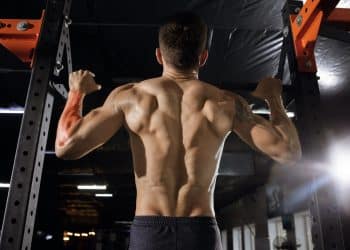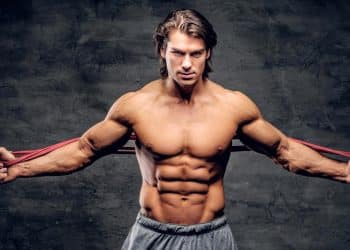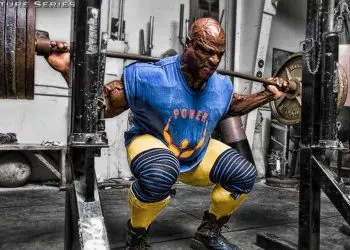Hello, and welcome back to yet another edition of Body Mechanics. A few weeks ago we discussed the almighty deadlift. I remember saying that the deadlift was a very important step in learning how to perform Olympic lifts. Today we will continue with that trend and move on to an exercise called the hang clean. This explosive movement builds power and targets the whole body. Just like the deadlift, the hang clean is an important step in the process of being able to perform an Olympic lift. Lets get to it.
Athletes are all about power. Yes, strength is important, but power is the ability to move the same force in a smaller window of time. When we maximize our power output we are more explosive, quicker, and stronger. These are the keys to success. Many exercises can be completed in a tempo that compliment this method of training. Few however, can incorporate the physiological response that olympic lifting can generate. This is why these lifts are crucial to our overall development and where we must also devote much of our training efforts.
The hang clean recruits many muscles as well. As I mentioned above, it is a full body movement, starting from the bottom to the top. The soleus, gastrocnemius, quadriceps, gluteal muscles, hip flexors, core musculature, the pectoral muscles, biceps, triceps, as well as the deltoids, traps and rhomboids are all involved. Our posterior kinetic chain is also involved to a degree. Some are more involved than others during certain parts of the lift, but all are definitely present and active as we perform the lift.
Always perform your power exercises first. The hang clean is a power movement, and as fatigue begins to set in our form begins to suffer. The hang clean is no exception. It is also important to note that when we start training, our level of energy allows for greater lifts and weight. Power exercise are performed fast and require a lot of coordination and timing. This is another reason to complete them first. As our level of training and conditioning improves, our ability to lift greater weight will naturally progress. If we don’t perform these lifts first, then we are not actually maximizing our potential gains.
Lets get into the technique.
Start by lifting the weight in a manner like the deadlift
Level Up Your Fitness: Join our 💪 strong community in Fitness Volt Newsletter. Get daily inspiration, expert-backed workouts, nutrition tips, the latest in strength sports, and the support you need to reach your goals. Subscribe for free!
• Grasp the bar in a pronated grip, arms extended fully but not forcefully
• The bar should be grasped at a width just outside the legs
• Feet approximately under the hips
• Bar is located over the balls of your feet approximately an inch away from the shin(especially during the lift)
• Hip back and up, back slightly arched, chest up, shoulders back and a neutral neck
• The movement is initiated by extending at the hips, extending at the knees and pushing through the heels of your feet
• You want to continue to lift the bar until it is approximately over the quads
• Flex at the hips slightly and maintain a slight bend in the knees, ensure that the bar is slightly above the knees. This is the starting position
• Arms are fully extended
• Jump up with the bar, triple extension needs to occur at the hips, knees and ankles while shrugging the shoulders at the top of the movement
• Maintain the bar close to the body
• Tuck under the bar
• Land in a quarter squat and with the bar over the clavicle and anterior deltoid, upper arms should be parallel to the floor while maintaining a rigid torso and slight arch in the lower back.
• Extend at the hips and knees until you are standing upright.
• That completes one repetition
Not the most complicated of exercises, but most definitely not suitable for a beginner. I caution you to practice with an un-weighted bar, or even a teaching stick to learn the range of motion required to perform the activity. Since it is a quick movement there is a great risk of hurting yourself. It is also advised to ask a trainer within your gym, or to speak with someone who is knowledgeable in this lift, to point out any errors you may have adopted in your technique. This is only a precursor to a more advanced technique and it is advisable to correct these issues before progressing with the movement.
Remember, the idea is to get better with every set, breath, and rep!
Happy Lifting!





